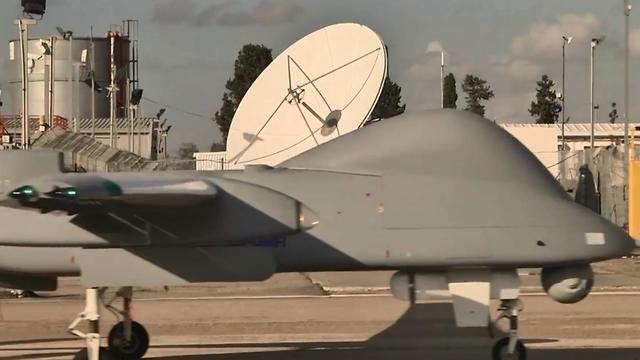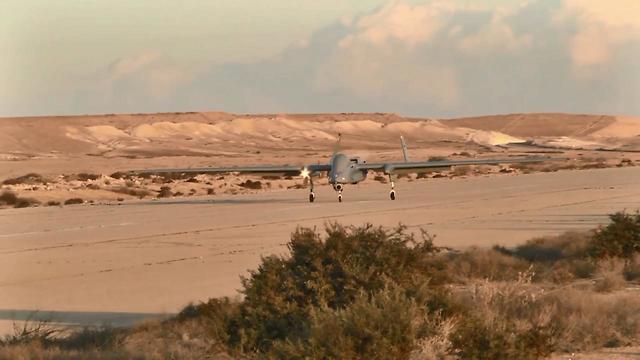Getting your Trinity Audio player ready...
Israel Aerospace Industries has recently completed the development of an improved version of the Heron UAV ,which includes remote control capability based on satellite communications and enables the landing and taking off of the drone hundreds of kilometers from its starting point.
Satellite communications in drones as an alternative to direct radio communication has been in use for more than a decade, but has been restricted, especially when the UAV has moved far away from its operating station.
Heron drone
(צילום: תעשייה אווירית)
The Air Force operates a number of Heron drones, including the Super Heron (Shoval) and the Eitan, the IDF's largest UAV with a wingspan of 26 meters and a weight of about five tons.
With these new capabilities, the Heron drone of IAI will be able to operate independently with a range of more than 1,000 kilometers from its home base, without a dependency on air or ground relay stations, in a predetermined orbit, and even make a refueling stop with the assistance of a ground force.
In such a stop, the drone can also change its operational pattern according to the needs or changes of the mission, as well as remove or add special charges or other means to carry out its mission.
"Through the satellite, it will be possible to turn off the drone's engine and restart it again, leaving the UAV on overnight mode in its mission area without have it return all the way back," a senior IAI source told Ynet. "This is a force multiplier that will provide tremendous operational flexibility. It is enough that there be a wide and deserted road in order for it to land and take off from it."
The upgraded Israeli UAV has already been awarded a civilian mission by a European customer, which will include aerial monitoring of the European coast, during which it will land in the open fields near the water line.
The drone's improved satellite capability was tested on a relatively short flight in Israel, from the small airport of Ein Shemer in the north of the Sharon region to the southern airfield of Ketziot, based on communications from the satellite.
"From our point of view, the UAV is operational in its new capability and with a high level of accuracy in landing using satellite," added the senior IAI official. “It has a an electro-optic payload, which scans the landing area to ensure it is safe to land while creating a security radius of dozens of kilometers from hostile elements that may interfere with or harm it, and it is protected from obstructions or GPS disruptions."
The Heron operates at an altitude of 28,000 feet and a speed of 120 knots and can carry out a range of strategic missions including intelligence gathering and surveillance.
Its average weight is 1,270 kg, in addition to payloads weighing about 300 kg. The optimal duration of the Heron in the air is a day, but as noted above, with its upgraded ability, it can be sent on long-term missions far away from home.







